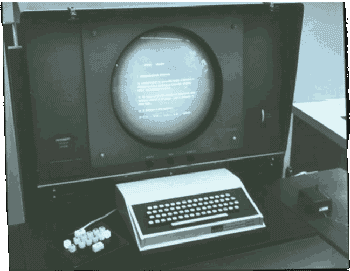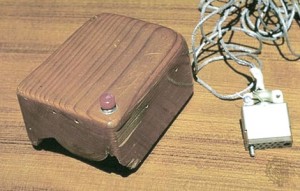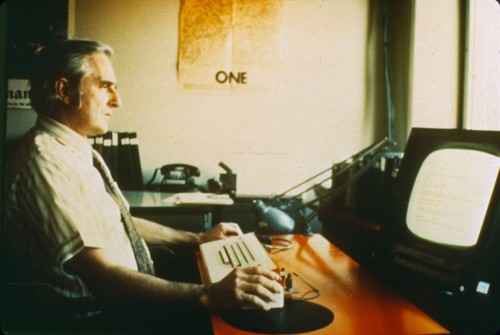Forty Five Years Ago, Everything Changed
On December 9, 1968, at a San Francisco Civic Center exhibition hall that no longer exists, engineer and inventor Douglas Engelbart unveiled personal computing.
Engelbart, who died in July at 88, never used the phrase “personal computing” in describing the hardware and software he and his team created but his presentation to 1,000 computer professionals at Brooks Hall demonstrated the core elements of personal computing including the mouse, networking, hypertext, video conferencing, word processing and multiple windows.
At a time when computers were hulking, punchcard-driven number crunchers, Engelbart offered a revolutionary conception of what a computer — and its user — could become.
Steven Levy, the author of 1994’s Insanely Great: The Life and Times of Macintosh, dubbed Engelbart’s display, “the mother of all demos.” The name stuck.
The results Engelbart showcased at the Fall Joint Computer Conference were a long time coming. His pioneering work was done at the Stanford Research Institute, now SRI International, in Menlo Park, where he was hired in 1957. Engelbart earned more than a dozen patents during his time there. His 1962 Augmenting Human Intellect: A Conceptual Framework laid out his vision for what’s basically now known as “personal computing.”
Engelbart said the goal of his research was to increase the “capability of a man to approach a complex problem situation, to gain comprehension to suit his particular needs and to derive solutions to problems. Increased capability in this respect is taken to mean a mixture of the following: more-rapid comprehension, better comprehension, the possibility of gaining a useful degree of comprehension in a situation that previously was too complex, speedier solutions, better solutions, and the possibility of finding solutions to problems that before seemed insoluble.” The rapidity of change in the world requires this kind of augmentation, Engelbart argued.
“Man’s population and gross product are increasing at a considerable rate, but the complexity of his problems grows still faster, and the urgency with which solutions must be found becomes steadily greater in response to the increased rate of activity and the increasingly global nature of that activity.”
 The project attracted funding from the US Defense Department’s Advanced Research Projects Agency and the National Aeronautics and Space Administration.
The project attracted funding from the US Defense Department’s Advanced Research Projects Agency and the National Aeronautics and Space Administration.
Engelbart’s belief in computers as a force for good was shaped during his service in World War II as a radar technician in the South Pacific. There he read a 1945 essay in Atlantic Monthly — “As We May Think,” by Vannevar Bush — that anticipated the computer and the worldwide Web. Bush, who founded Raytheon, called it “memex.”
Research by Engelbart and his team developed the essentials of modern computing. While Engelbart’s mouse is a hollowed wood block, it’s definitely a mouse. At the computer conference, he calmly unveils the “oN-Line System” he has created, NLS. During his presentation, Engelbart incorporates live video feeds, switching back and forth from his “screen” to those of his team in Menlo Park. The cameraman there is Stewart Brand, the creator of the Whole Earth Catalogue, and a special adviser to Gov. Jerry Brown from 1978 to 1979. When he finishes his demonstration, Engelbart receives a standing ovation.
SRI has posted the “mother of all demos” in its entirety.
Overshadowed in later years by innovators like Bill Gates and Steve Jobs, Engelbart continues working, establishing an institute at SRI. In 1998, Stanford University hosted a celebration to mark the 30th anniversary of Engelbart’s presentation, renewing interest in Engelbart’s innovation and vision. He died at his home in Atherton on July 2.
-30-
Filed under: California History
Capitol Cliches Conversational Currency Great Moments in Capitol History News Budget and Economy California History Demographics Fundraising Governor Legislature/Legislation Politics State Agencies
Opinionation Overheard Today's Latin Lesson
Restaurant Raconteur Spotlight Trip to Tokyo Venting Warren Buffett Welcome Words That Aren't Heard in Committee Enough



Fascinating article!
Comment by John Lovell — 12.10.2013 @ 1:14 am
Incredible to think the “mother of all demos” was only 45 years ago. How far we’ve come. If Englebart didn’t know how they came to call the scroller a mouse, I wonder who did know.
Comment by Susan McCabe — 12.10.2013 @ 11:13 am